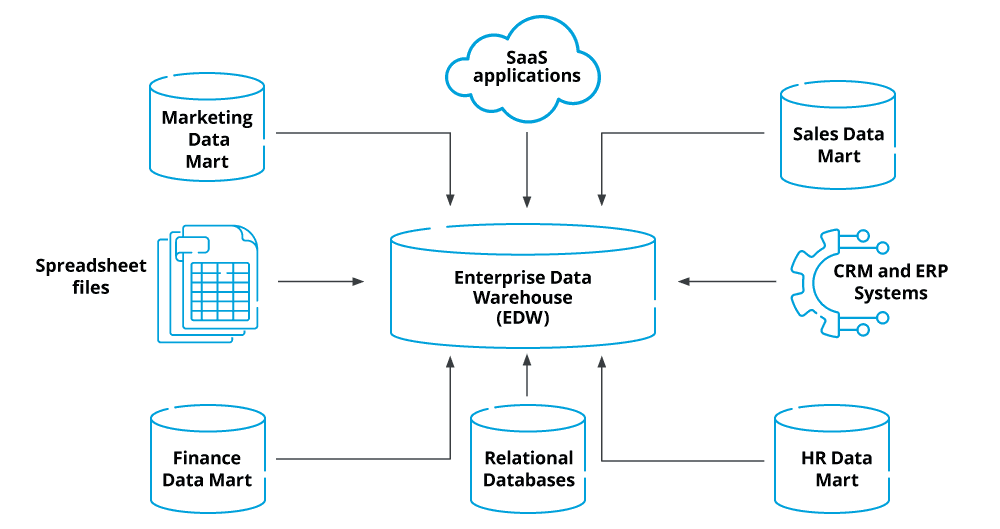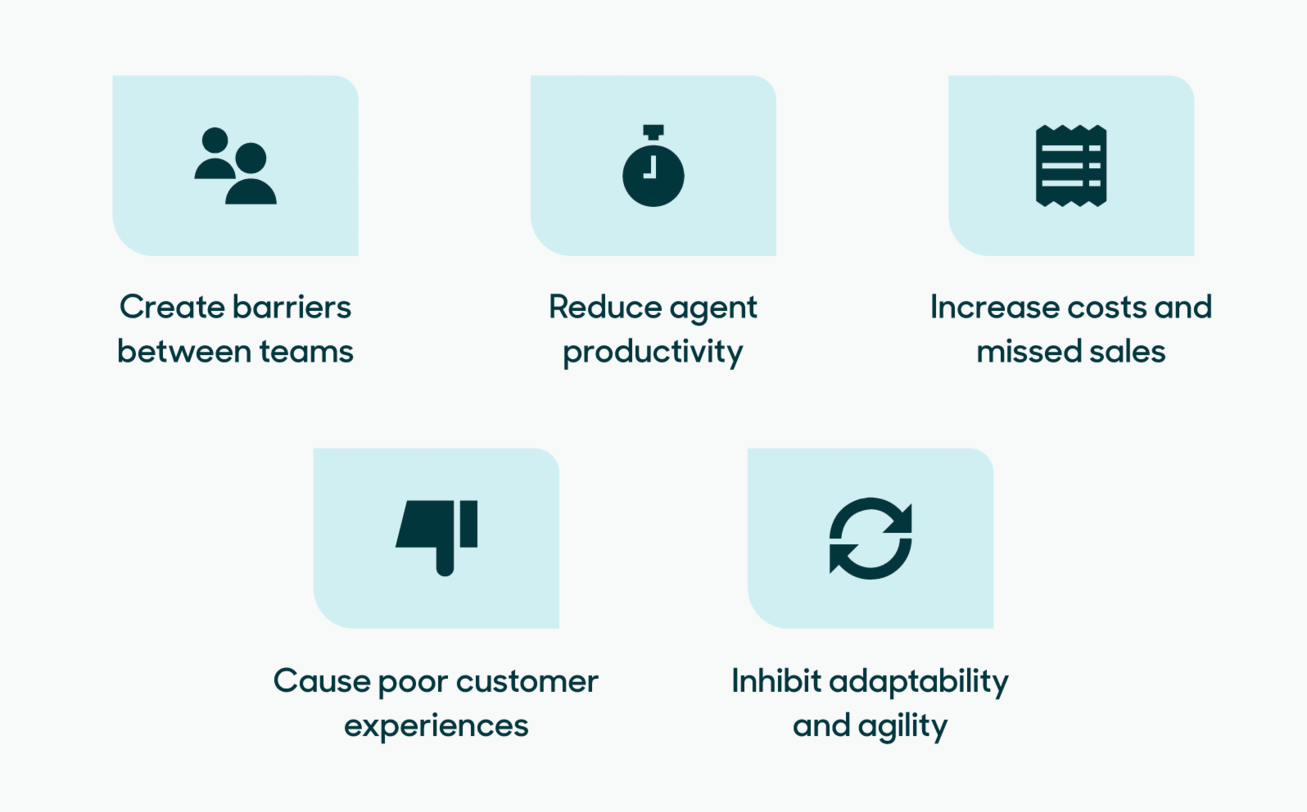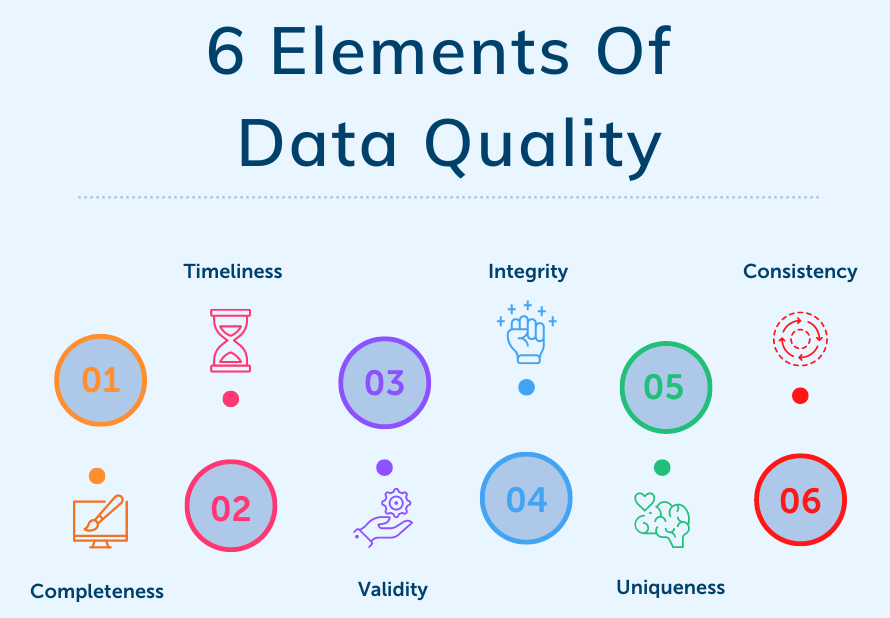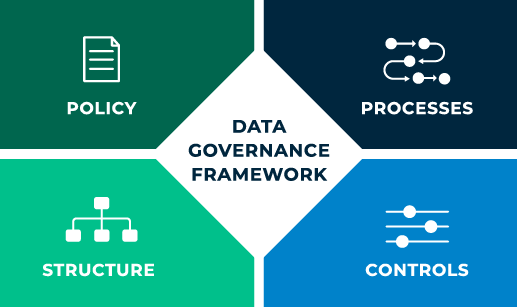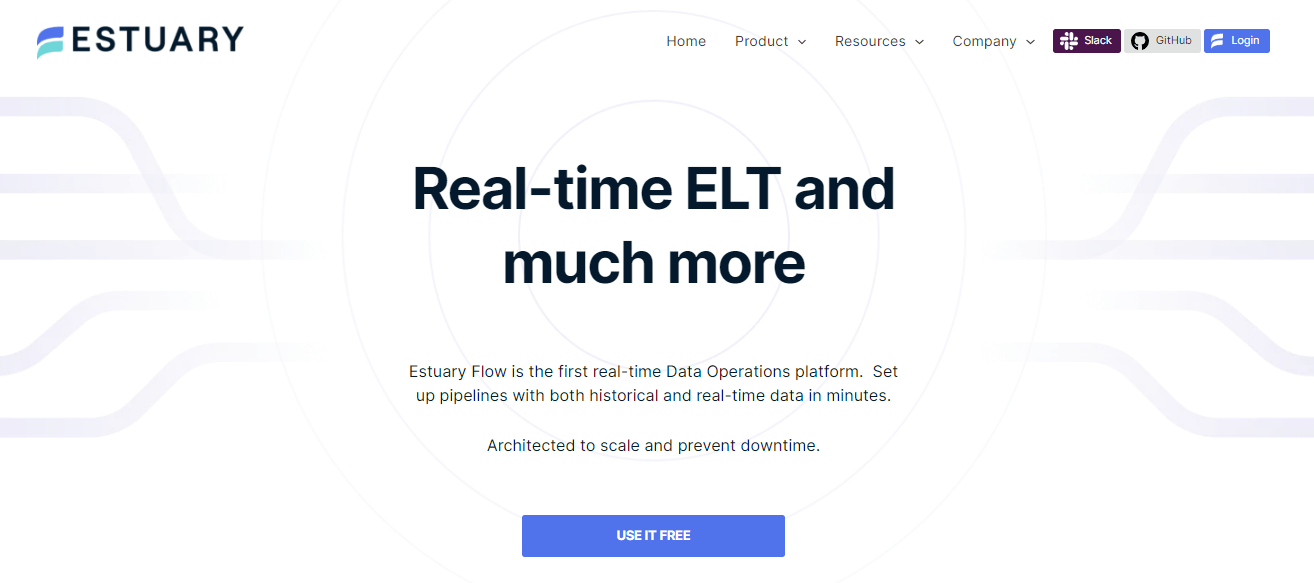
Lost revenue, stalled innovation, unhappy customers – all because of fragmented enterprise data. When business units operate in silos, it’s easy for valuable insights to get buried across disconnected systems. But there’s a way to fix it: enterprise data integration (EDI). It unifies different data sources into a single, coherent view to tackle this issue head-on.
You can tell the stakes are high when over 80% of enterprise business operations leaders emphasize how important data integration is to their ongoing operations. If you don't get it right, it can hurt your balance sheet and put your company behind the competition. Something that no business would want.
If you also want to break free from this data dilemma, you’re on the right page. We’ll explore what enterprise data integration actually is, why it’s so important for your business, and look at best practices to help you manage this complex task more effectively.
What Is Enterprise Data Integration?
Enterprise Data Integration (EDI) is the specialized process of consolidating different kinds of data from multiple sources. These sources can be within a single organization or spread out across different companies, as often seen in business scenarios like mergers, acquisitions, or partnerships.
The end goal is a centralized hub of data, often called a “single source of truth”, where all this diverse information becomes unified, consistent, and easily accessible.
Here are common business scenarios where EDI plays a critical role:
- Mergers and acquisitions: When 2 companies merge, their data does too. EDI helps in harmonizing the data from different company systems into a unified format.
- Partnerships: Sometimes businesses engage in joint ventures or partnerships. In these cases, data from both entities needs to be integrated for a seamless operation.
- Different departments: Even within a single enterprise, departments like Sales, HR, and Operations can have different types of data stored in various formats. EDI brings all this under one umbrella.
The Complexity & Challenges of Data Fragmentation
As businesses grow, they generate more raw data from different sources like customer interactions and supply chain processes. If you think of a large company with multiple departments, each will use its own set of data resources. Some estimates suggest that a large enterprise uses an average of 187 to 190 applications.
The issue here is all this data often exists in isolation, stuck in so-called data silos which makes it difficult for different parts of a business to share information effectively.
Think about a large company with 90 procurement offices. If each office negotiates contracts independently and stores this data in different databases, imagine the complexity involved in pulling all this information together. Now add financial data stored in Excel spreadsheets into the mix. This situation can cause a host of problems:
- Lack of unified view: With data scattered across various departments, systems, and formats, creating a unified view becomes a major challenge.
- Regulatory challenges: With disparate data, it becomes difficult to comply with regulations like GDPR and CCPA for tracking and control over data.
- Overwhelmed IT resources: Even a talented IT team can find it overwhelming to manually manage and integrate data at the scale required for large organizations.
- Slow decision-making: When data is fragmented, gathering insights becomes a slow process. When decisions take too long to make, it can mean missing out on some great opportunities and, ultimately, less money in the bank.
The Solution
To deal with this data fragmentation and complexity in enterprise settings, you need a robust data integration solution like Estuary Flow, Informatica PowerCenter, or Talend. These tools simplify workflows and streamline real-time ETL and change data capture (CDC) processes by integrating various data sources into a single, coherent system.
But, before we look at how a reliable data integration tool can help you set up data pipelines, let’s dive into why data integration matters for businesses.
Enterprise Data Integration: Why it’s a Cornerstone for Evolving Business Processes
Enterprise data integration is catching the eye of both business and IT leaders. In a time where data equals business growth, integrating distributed information into a unified system is a must. When you get EDI right, you get data-driven decisions, improved operational efficiencies, and better alignment between business objectives and technological capabilities.
Let's look at the top 15 benefits that enterprise data integration can offer to your organization:
Simplifies Data Complexity
With all your data in one place, managing it becomes a lot simpler. No matter where the information comes from – be it sales, marketing, or operations – it all gets streamlined into one database. This makes data management much easier as it removes the complications that come from having information stored across different systems and formats.
Accelerates Decision-Making
Having a unified view of all your business data means you can analyze it more quickly and efficiently. Senior executives don’t have to wait for weeks to get the insights they need. With real-time data at their fingertips, they can make informed decisions much quicker and capitalize on business opportunities.
Boosts IT Productivity
EDI benefits IT teams with automated data management. It cuts down significantly on the time and resources usually spent to manually collect, clean, and prepare data. With these processes automated, your IT staff can focus on more strategic tasks like data analysis and developing new capabilities that add value to the business.
Streamlines Regulatory Compliance
EDI includes features that help comply with data protection laws like GDPR and CCPA. With integrated data, it’s much easier to track each data point’s lifecycle – where it came from, who accessed it, and what changes were made. This makes audit trails easy and helps in meeting regulatory requirements.
Improves Data Quality
An often-overlooked benefit of EDI is the enhancement in data quality that comes with it. Data inconsistencies are easier to spot and rectify when all your information is housed in one place. Having better data quality means your analytics and insights are spot-on, and that, in turn, helps you make wiser business decisions.
Enhances Data Security
When you centralize your data, you get better control over who can access it. This focused approach steps up your data security measures. Reducing the number of repositories where data is stored also reduces the potential points of failure which eventually increases data security.
Facilitates Team Collaboration
With data readily available, teamwork gets a significant boost. Employees from different departments can access the data they need without going through a long chain of requests. This speeds up workflows and improves productivity as your teams won’t have to deal with administrative delays.
Facilitates Data Governance
EDI makes it easier to adopt a strong data governance model. Its features help catalog data and monitor its history. It gives you clear insights into what data you possess, its origins, and its transformations over time. This not only helps with meeting regulations but also builds your team's trust in the quality and dependability of your data systems.
Enables Predictive Analytics
The data consolidation lets you use advanced analytics tools like predictive analytics and machine learning algorithms more effectively. With a unified dataset, these tools deliver accurate and comprehensive insights. This lets you confidently predict trends, make decisions in real-time, and get a better grasp of complicated data patterns.
Improves Customer Experience
When data from various customer interactions is integrated, you get a comprehensive understanding of your customers. This detailed customer profile helps tailor marketing messages, product recommendations, and support services. As a result, customer satisfaction and brand loyalty increase.
Lowers Total Cost Of Ownership (TCO)
While the initial setup cost of an EDI system can be high, it reduces operational costs over time. This is because a well-integrated data environment simplifies maintenance, reduces redundancy, and minimizes the need for manual data handling – ultimately lowering the Total Cost of Ownership.
Improves Vendor-Partner Relationships
When your data is integrated, sharing information with vendors, suppliers, and business partners becomes much easier and more reliable. This clear, hassle-free data exchange builds trust and improves working relationships. Better communication also causes smoother operations and more fruitful collaborations for everyone involved.
Boosts Innovation
When data is organized and easy to find, your data scientists and analysts will feel more inspired to think outside the box. This well-structured data environment frees up mental space for teams to focus on solving problems and coming up with new ideas.
Enhances Competitive Advantage
Companies that have successfully integrated their enterprise data have better situational awareness and can react to business trends and market changes more quickly. This agility gives them a real edge over their competitors.
Streamlines Compliance Auditing
In industries where regulations are stringent, EDI simplifies the audit process for businesses. With all relevant data centrally located, it’s easier to gather evidence for compliance. This not only makes audits more efficient but also saves time and reduces potential risks.
The Role of Estuary Flow in Enterprise Data Integration
Estuary Flow is a DataOps platform tailored to address the challenges of enterprise data integration. It provides real-time ETL and CDC functionalities, so if you are looking for seamless data communication across various systems, it could be worth considering Flow for your data integration needs.
Equipped with features prioritizing user accessibility, data quality, and strong security measures, Flow is a fully managed solution that easily handles the complex and varied demands of enterprise-level data integration.
Flow’s key features are:
- Built for Scalability: Flow is a scalable solution that can handle growing data volumes.
- Optimized Materializations: It provides quick data views across systems which helps in more effective data utilization.
- Extensibility: Open protocols for adding new connectors make Estuary Flow adaptable to future business needs and technologies.
- Real-Time Monitoring: Live reporting features provide enterprises with immediate insights which are crucial for quick decision-making.
- Fault Tolerance: Estuary Flow’s architecture is designed to withstand failures and provide dependable data integration for businesses.
- Data Optimization: Automated features like schema management and data deduplication let you concentrate on core strategic tasks.
- Advanced Data Transformation: Real-time streaming SQL lets you handle various data scenarios to meet the different needs of enterprise applications.
- Enterprise-level Real-time ETL and CDC: For efficient data integration within complex enterprise data systems, Flow uses real-time ETL and CDC functions.
- Strong Security Measures: Data integrity and confidentiality are assured through industry-standard security measures like encryption and authentication.
- Data Quality Assurance: Automatic schema validation and unit testing help enterprises maintain the highest levels of data accuracy without relying on external tools.
- User-Friendly Interface: Designed for enterprises, Flow offers a no-code interface that makes it easy to manage data pipelines for both tech-savvy and novice users.
- Multi-Source Integration: It has over 200 pre-configured connectors that facilitate easy integration with different databases and applications to align with enterprise-grade requirements.
- Cloud Compatibility: Being cloud-agnostic, Flow gives your enterprise the freedom to choose from various cloud service providers. This makes it ideal for managing data warehouses in the cloud.
Best Practices to Improve Enterprise Data Integration
Managing business data can be tough, especially when you need to bring different types together. Here are 7 best practices to help you with your enterprise data integration initiatives.
Set Clear Strategy & Plan Wisely
Start with a well-defined strategy that matches your business goals. Think about what you want to achieve with enterprise data integration. Are you looking to speed up reporting or create a more data-centric culture?
Knowing these objectives upfront will help you decide on which systems to integrate and how they’ll affect different departments. This lets you create a solid plan and keep everyone informed about what to expect.
Prioritize Data Governance
When you’re dealing with tons of digital information, you can’t ignore data governance. Define who has the right to create, read, update, and delete data – often known as CRUD. With these permissions clear, you’ll know exactly who has access to what data, making it easier to maintain security across systems.
Be Mindful Of Technology Choices
Each tool you select should have a clear purpose. Whether it's data fabric or another option, it should fit well into a specific part of your data flow. Don't forget, your choice of a data integration tool should also be great at automating entire business processes smoothly.
Focus On People & Processes
The best technology can’t make up for a poor adoption strategy. The real success comes when people within the organization adapt to the new data structure. It is not just technology but also effective communication and training. In addition to making systems talk to each other; help people interact with these systems more efficiently.
Monitor & Track Performance Metrics
Monitoring your integration systems helps understand how well the systems are performing. Keep an eye on metrics about the efficiency, accuracy, and speed of your data processes. This not only identifies areas for improvement and supports business intelligence but also assures stakeholders that the integration is delivering as promised.
Be Prepared For Scalability
Businesses grow and change and your data integration strategies should be flexible enough to grow with them. From the beginning, pick solutions that can scale to accommodate more data sources, higher volumes, and additional functionalities. This saves you from redoing work as your enterprise evolves.
Commit To Continuous Improvement
Enterprise data integration is an ongoing process that requires you to adapt to changing business and regulatory environments. Low-code tools can help make this adjustment quicker so you can make updates without getting into complex coding. Always aim for progress; your data integration efforts should never be considered “done.”
The Takeaway
Every piece of information generated within a business is a potential goldmine of insights. But without enterprise data integration, this data stays trapped, untapped potential. Enterprise data integration fuels AI, machine learning, and advanced analytics, providing organizations with the tools to uncover hidden patterns, make informed decisions, and stay ahead of the competition.
However, given the challenges of managing large volumes of data across multiple systems, implementing the right enterprise data integration is easier said than done. This is where a purpose-built data integration solution like Estuary Flow helps.
With its robust CDC, built-in data quality, and real-time monitoring, Flow integrates data across your systems and applications. This powers quick decision-making through unified analytics and insights.
If fragmented data is holding your business back, Estuary Flow can connect the dots. Sign up for a free trial today or contact our team to learn more.
Frequently Asked Questions
How does enterprise data integration (EDI) differ from regular data integration?
While regular data integration consolidates data from various sources, it is often focused on more limited, specific projects or operational areas. Enterprise data integration (EDI), on the other hand, is a more holistic approach that unifies data across an entire organization or even between multiple organizations in cases of mergers or partnerships.
What kinds of data can be integrated using EDI?
EDI is versatile. It can integrate a wide range of data types including:
- Structured data like a data warehouse
- Unstructured data like emails
- Semi-structured data like XML files or JSON documents.
What are some common pitfalls to avoid during an EDI implementation?
Common issues during EDI implementation include a lack of clear objectives, insufficient stakeholder involvement, choosing the wrong technology, and neglecting data governance policies. Another issue is when organizations underestimate the complexities involved in integrating data from legacy systems. This causes delays and cost overruns.
What skills are necessary for implementing & managing enterprise data integration?
Implementing and managing an EDI system requires a combination of technical and managerial skills. On the technical side, you need expertise in:
- Data analysis
- Programming
- Database management
- Data integration tools and platforms
On the managerial side, you need these skills for a successful implementation:
- Project management skills
- Effective communication with stakeholders
- Strong understanding of business processes

Author
Popular Articles





